The traditionally working-class neighbourhoods of La Latina and Lavapiés spread steeply downhill towards the Manzanares River. Known as los barrios bajos they have traditionally been home to Madrid’s poorest workers, smelliest industries and most desperate immigrants. This was where the slaughter houses and cigarette factories were located, and where huge, filthy tenement buildings were thrown up in the great industrial surge of the 19th century. The workers were a tough-talking, flashy dressing crowd, usually described as the Madrileño equivalent of cockneys. The latest wave of immigrants are more likely to be from North Africa, South America, Korea or China than Andalucía or Galicia, and the sinuous sounds of Arabic pop songs or Dominican salsa tunes regularly float above the rooftops. La Latina and Lavapiés are rapidly becoming Madrid’s most multicultural neighbourhoods, and young artists are also moving in to add to the mix, bringing trendy bars, cafés and vintage clothes stores in their wake. The Sunday morning flea market El Rastro is a classic: follow it in true Madrileño style with a tapas crawl around the local bars.
Sights
Plaza de la Paja
Metro La Latina.
Plaza de la Paja was once the most important square of medieval Madrid. Until recently, it was sadly neglected. However, newly spruced up, it has become one of the prettiest in Madrid, and the best example of the neighbourhood’s continuing regeneration. Cut off from traffic, and scattered with a few trees and some benches, it is overlooked by the handsome Church of San Andrés and ringed with restored 19th-century palaces. Some of Madrid’s hippest bars have opened their designer doors and, on summer evenings, it teems with Madrid’s fashionable youth.
The Plaza de la Paja is linked to the Plaza de la Humilladero, Plaza de San Andrés and Plaza de los Moros, which all form one large, pedestrian space. This is the place to come after the Rastro, when everyone spills out of the surrounding tapas bars, kids run around with their footballs, and musicians play their bongos and guitars out in the sunshine.
Museo de San Isidro
Plaza San Andrés 2, T 91 366 7415, http://www.munimadrid.es/museo sanisidro/ Tue-Fri 0930-2000 (1430 in Aug), Sat-Sun 1000-1400. Free. Explanations in Spanish only, but there is a small guidebook in English available. Metro La Latina or Tirso de Molina.
This is one of the newest city museums, dedicated to Madrid’s patron saint, San Isidro, and housed in an immaculate former palace which has been completely rebuilt by the city council. According to legend, this was the house of San Isidro’s masters, the Vargas family, and it was here that Isidro and his equally saintly wife, Santa María de la Cabeza once lived. Countless miracles have been attributed to the saintly duo, but one of the most celebrated is the story of their drowned child, who fell down the well. The couple prayed and prayed and finally the well filled up and overflowed, disgorging their son, who was found to be perfectly fine. This very same well (honestly) has been incorporated into the building, along with the 17th-century Capilla de San Isidro, given a layer of baroque frilliness in the 1790s, which is where the saint supposedly died. A section of the museum is devoted exclusively to the life and times of San Isidro and Santa María.
Much of the rest of the museum is devoted to a general overview of the city’s history and most of the archaelogical findings formerly stored in the municipal museum have been moved to these larger, more modern surroundings. The collection still looks woefully thin, though. Altogether more attractive is the little Renaissance courtyard, with its columns, fountains and sculptures, and the charming garden (Jardín Arqueobotánico) which has examples of some of the trees to be found in medieval Madrid. The temporary exhibitions are also excellent.
Iglesia de San Andrés and the Capilla del Obispo
Plaza de San Andrés, T 91 365 48 71. Open for mass only. Metro La Latina.
This church was almost completely destroyed in the Civil War, and contains nothing of much interest to the visitor. The adjoining Capilla del Obispo is generally considered to be the loveliest chapel in Madrid, a Renaissance gem which has been under restoration for years. It opened in 2000 for a couple of days to everyone’s delight and then mysteriously closed. Sadly, there are no plans to reopen.
Cava Baja
Metro La Latina.
Cava Baja (and the streets which feed into it) is one of the best areas in Madrid for tapas, with plenty of traditional taverns, and the odd flamenco bar. It’s especially good for the obligatory post-Rastro drink.
Catedral de San Isidro
C Toledo 37–39, T 91 369 2310. Mon-Sat 0830-1230, 1830-2030, Sun and holidays 0900-1400, 1730-2030. Free. Metro La Latina.
This enormous twin-towered baroque church was once the headquarters of the Jesuits in Madrid until their expulsion from Spain in 1767. The church was promptly altered to expunge all trace of the austere Jesuit style, the frothy Churrigueresque façade was added, and it was rededicated to San Isidro who had been canonized in 1622. The remains of San Isidro and his wife Santa María de la Cabeza were moved here from the chapel in the Church of San Andrés (to the fury of the local priest) and it served as the Madrileño cathedral until the Catedral de Nuestra Señora de la Almudena was completed in 1993.
Basílica de San Francisco el Grande
Plaza de San Francisco, T 91 365 3800. Summer Tue-Sat 1100-1300, 1700-2000, winter 1100-1300, 1600-1900. Guided tours only, in Spanish. €1. Metro La Latina.
Larger, grander and even gloomier than the Catedral de San Isidro, the Basílica de San Francisco el Grande lives up to its name with a massive dome spanning more than 30 m. It was built between 1762 and 1784 on the ruins of a hermitage supposedly founded by Saint Francis himself, but, after the state seized the church properties in the 1830s, it briefly became barracks. Then in 1869 the church was converted into a national pantheon and the bones of some of Madrid’s most famous writers were brought here, only to be returned to their original resting places a few years later. It’s in the middle of a lengthy restoration project and much of it is wrapped up in scaffolding and nets. Look out for Goya’s early painting of San Bernadino de Siena in the chapel dedicated to the saint.
Puerta de Toledo
Metro Puerta de Toledo.
This pompous gateway was erected in 1817 as a celebration of Fernando VI’s return to the throne after Joseph Bonaparte’s brief government. Equally unattractive is the Mercado de Toledo, a modern development just off the roundabout, which houses an assortment of antique and craft shops; it has never really taken off (the disgruntled shopkeepers blame the city council for advertising it so poorly) and is usually deserted. There are some excellent vintage clothes stores on Calle Mira el Río Alta and Calle el Río Baja just to the northeast. On Calle de la Paloma you’ll find the lovely neo-Mudéjar Iglesia de la Virgen de la Paloma, the focus of a delightful pilgrimage and festival in early August.
El Rastro
C Ribera de Curtidores. Sun mornings. Metro Tirso de Molina or Puerta de Toledo.
Madrid’s famous flea market takes place every Sunday morning. Stalls wind all the way up Calle Ribera de Curtidores and sell everything from tacky clothes and souvenirs to leather goods, underwear, arts and crafts and kites. The street name means Tanner’s Alley and recalls the pungent trades which took place down here out of sight (and smell) of the smart neighbourhoods at the top of the hill. ‘Rastro’ refers to the sticky trail of blood left when the meat carcasses were hauled through the streets. The neighbourhood is still a little shabby and run-down, although it’s in the process of regeneration and half the streets seem to have been dug up, but the leather trade is now a thing of the past. The surrounding shops are mainly devoted to antiques and bric-a-brac, although you’ll still find plenty of leather goods here too. Most shops are open all week, including Sunday mornings, but the days of a bargain are long gone. Watch out for your bags as the Rastro is notorious for pickpockets. The atmosphere is wonderful, and carries on long after the stall-holders have packed up, when everyone heads to the surrounding bars for some tapas and a well-earned cold beer.
La Corrala
Corner of C Mesón de Paredes and C Tribulete. Metro Lavapiés.
Most of the tenement buildings thrown up in the late 18th and early 19th centuries to provide homes for the workers in the surrounding factories and slaughterhouses have been destroyed; this is a lone survivor, which dates back to 1790. It’s been given a lick of ochre paint and has undergone several restorations since the city authorities took it over in 1981, although inhabitants still complain of cracked ceilings and damp walls. The name corrales was given to these buildings because they were usually set around a communal courtyard (corral), where families would have to come to collect their water. The original courtyard has now disappeared but the square in front of the Corrala is sometimes used for traditional zarzuela performances in summer (see the tourist information offices for details). Don’t miss it if you get the chance.
Fábrica de Tabacos
C de Embajadores. Metro Lavapiés.
At the height of its production, the enormous Royal Tobacco Factory employed 3,000 women, the original Carmens, sharp-tongued beauties who were as famous for their solidarity as they were for their feistiness. They formed a powerful union and fought for an improvement in working conditions, including the establishment of schools, nurseries and pensions. By the early 20th century, mechanization had taken its toll, and the once-grand factory now stands forlorn and empty.
Head west from the Plaza San Andrés down Calle Don Pedro for Las Vistillas, a small neighbourhood of bars and cafés on top of a hill, which offers spectacular views of the sun setting over the distant sierras. During the Fiesta de San Isidro, it’s full of bands, stalls selling chocolate-dipped churros and picnicking families.









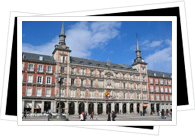 The best way to understand this period's defining characteristics is to visit the
The best way to understand this period's defining characteristics is to visit the 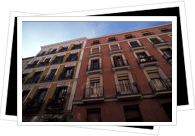 Madrid architecture became more ornate under the Bourbon dynasty due to French and Italian influences. Pedro de Ribera's Hospice, now the Municipal Museum on calle Fuencarral (in the
Madrid architecture became more ornate under the Bourbon dynasty due to French and Italian influences. Pedro de Ribera's Hospice, now the Municipal Museum on calle Fuencarral (in the 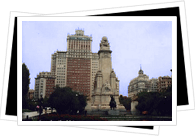 A stroll down
A stroll down 
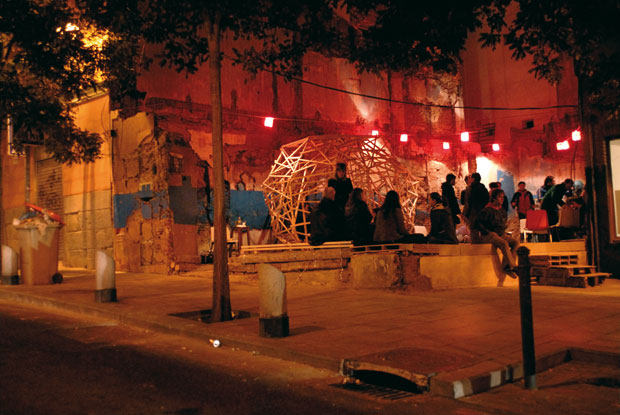
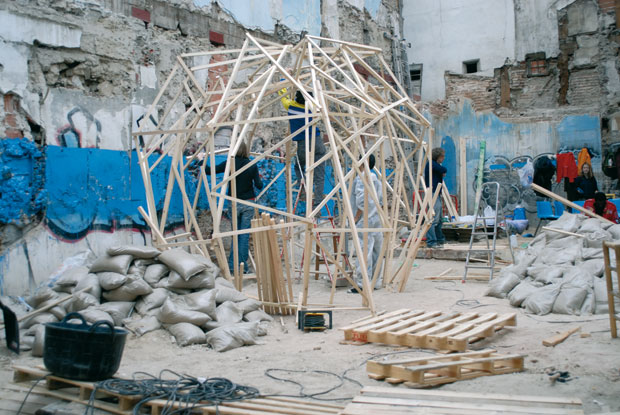
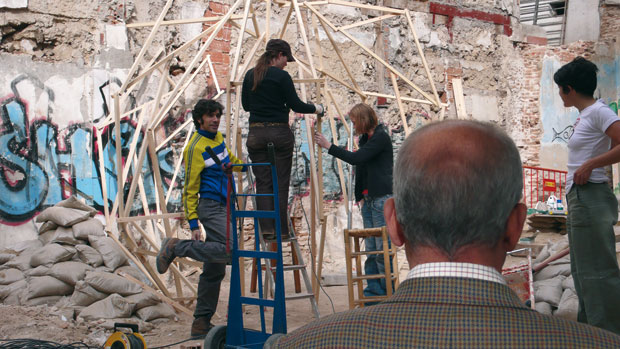

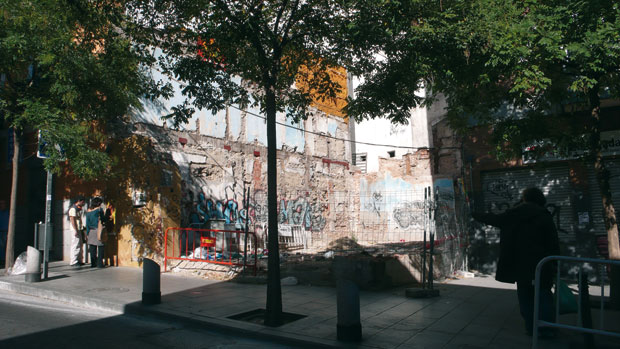


 "We get very bad press from the newspapers and TV," Pilar, the owner of a trendy bar in the heart of the barrio, told me. "People are afraid to come down the hill to Lavapiés because of what they say about us. We’ve never had any problems or felt unsafe. Everyone knows everyone. It’s a real community here."
"We get very bad press from the newspapers and TV," Pilar, the owner of a trendy bar in the heart of the barrio, told me. "People are afraid to come down the hill to Lavapiés because of what they say about us. We’ve never had any problems or felt unsafe. Everyone knows everyone. It’s a real community here." 


















